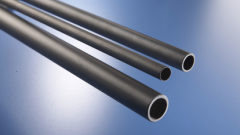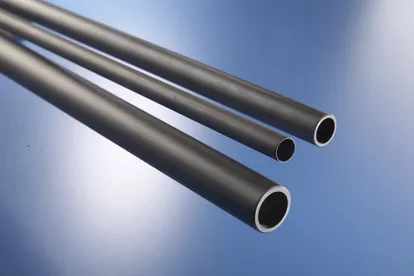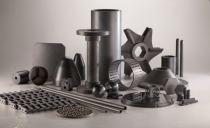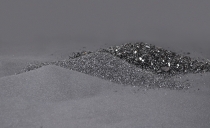
The Material of Choice for Lithium-Ion Battery Manufacturing
Five Reasons Why Hexoloy® SE is the Material of Choice for Lithium-Ion Battery Manufacturing
Increasing adoption of electric vehicles (EVs) and demand for grid-scale energy storage are two reasons why forecasters predict that the global electric vehicle batteries market should reach $161.3 billion by 2028 from $66.4 billion in 2023 at a compound annual growth rate (CAGR) of 19.4%.
Multiple cathode active material (CAM) chemistries are available to provide the optimum combination of energy density, cost, and safety for the target application. Some of the popular formulations include:
NMC — lithium nickel cobalt manganese oxide (LiNiCoMnO2)
LCO — lithium cobalt oxide (LiCoO2)
NCA — lithium nickel cobalt aluminum oxide (LiNiCoAlO2)
LMO — lithium manganese oxide (LiMn2O4)

In the face of burgeoning demand, manufacturers are boosting production with new, larger RHKs that require larger diameter and longer rollers compared to earlier kiln versions. These rollers must also demonstrate long service life and high reliability with significant loads.
Saint-Gobain Performance Ceramics & Refractories’ Hexoloy® SE is a self-bonded fine-grained (less than 10 µm) silicon carbide (SiC) material that combines exceptional strength at high-temperature operation with high chemical corrosion resistance. Here are five reasons why Hexoloy material is ideally suited for RHKs in Li-ion battery manufacturing applications.
High-temperature stability
RHK temperatures can reach up to 1,200°C (2,192°F) during the calcination process for cathodes. Hexoloy® SE material’s single-phase composition allows it to operate up to 1,600°C in air (and even higher in an inert atmosphere) and results in an extremely low coefficient of thermal expansion (4.02 x 10-6/°C), making it very stable in severe-environment applications.
High thermal conductivity
Hexoloy® SE materials’ high thermal conductivity (34.8 W/mK at 1,200°C) makes it very resistant to thermal shock.
Extreme hardness
Hexoloy® SE SiC is one of the hardest high-performance materials available and is 50% harder than tungsten carbide. Its density is over 95% theoretical and it is essentially impervious without the use of any impregnants, which means no contamination in high-purity applications. Minimizing contamination is critical to high-quality battery manufacturing: particles are especially damaging and can produce unwanted reactions and shorts in finished batteries.
High strength
Hexoloy® SE SiC rollers offer higher load-bearing capability than silicon-infiltrated silicon carbide (SiSiC); therefore, these rollers are typically offered with thinner walls. In large RHKs, Hexoloy® SE SiC rollers can measure up to 50 mm in diameter with 7 to 8 mm thick walls in lengths up to 3350 mm. The ability to achieve the same strength with a lighter, thinner roller allows the designer to increase energy efficiency with lower-cost smaller motors that draw less power.
Virtually universal corrosion resistance
High corrosion resistance gives longer product life, lowers maintenance costs, and increases uptime. RHKs in battery manufacturing operate with a variety of gases: air, oxygen, nitrogen, nitrogen plus hydrogen, and CO2. In addition, cathode powders include corrosive chemistries: the RHK must be resistant to all of the various gases and formulations.
The many desirable properties of Hexoloy® SE SiC make it the clear choice for use in RHKs in Li-ion battery manufacturing production lines of cathode active material.
Related Content
Hexoloy SE SiC Material
Discover the benefits of Saint-Gobain Performance Ceramics & Refractories’ Hexoloy® SE silicon carbide material.
Hexoloy Silicon Carbide Material
Discover Saint-Gobain Performance Ceramics & Refractories’ Hexoloy® SiC - a pressure-less, sintered form of alpha silicon carbide.
Silicon Carbide (SiC)
Silicon carbide ceramics for a range of industries, including electronics.


